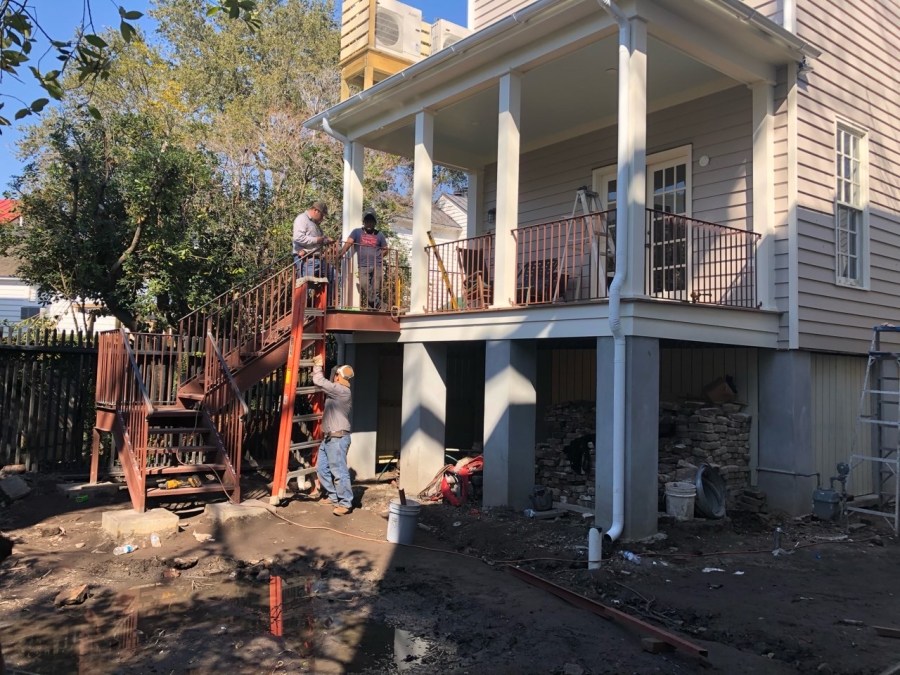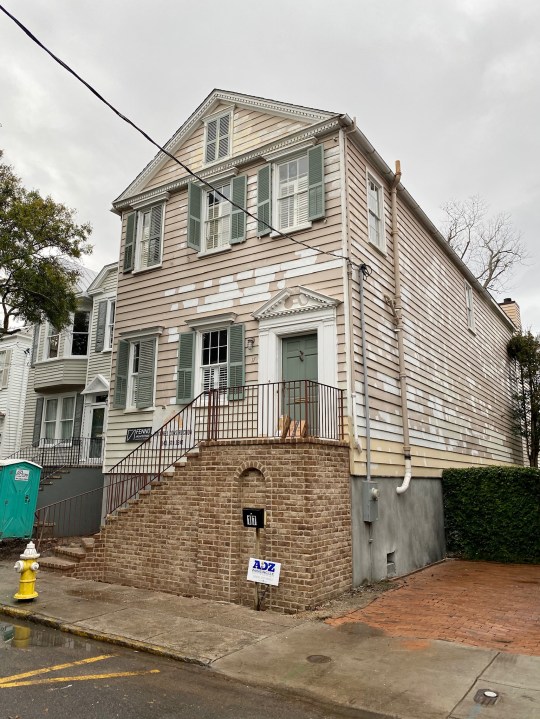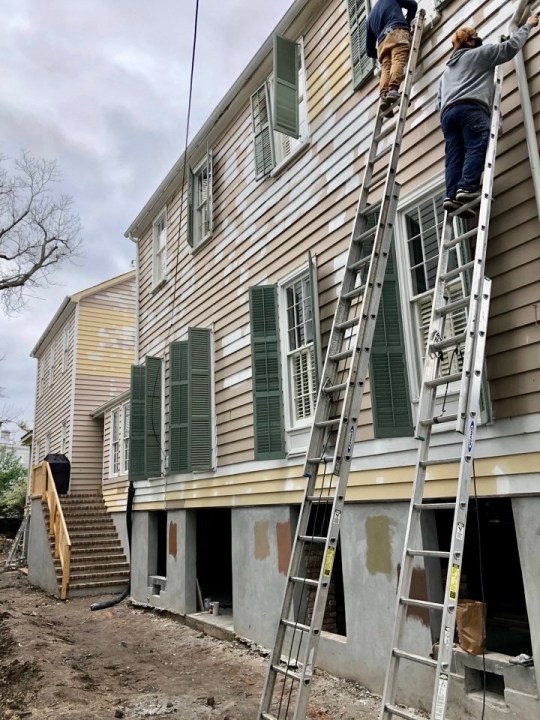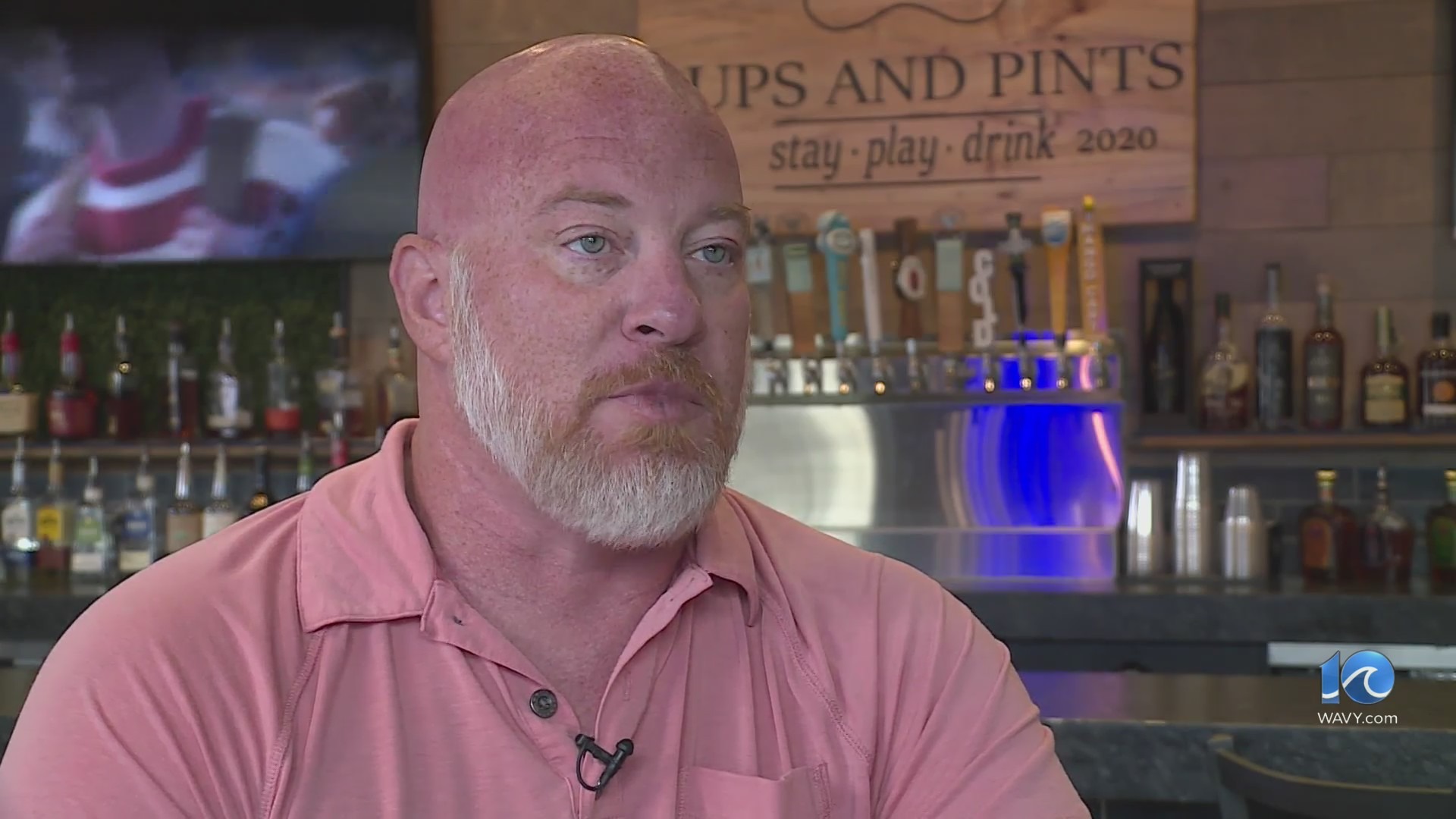WAVY-TV 10 is investigating solutions to protecting Hampton Roads from rising seas. This is the third installment in our investigative series, “Living at the water’s edge.” For this story, our investigative team traveled to Charleston, S.C. to see how that community is responding to reoccurring flooding and if those solutions could work in Hampton Roads.
CHARLESTON, S.C. (WAVY) — Lee and Allen Kaplan still feel like they’re on vacation, even 25 years after moving to Charleston.
“It’s fascinating because you keep finding new things,” Lee Kaplan said of walking the city. “We keep switching out the routes and the houses look different at different times of year. You peak into the gardens and look, especially now because you’re going to be planting. It still feels wonderful.”
The Kaplans live in a historic home on Logan Street. It was built in the 1860s in the infamous “Charleston single house” style — long, narrow, and close to sea level.
“It’s just bright, and the light is wonderful,” Lee Kaplan said. “The rooms go all the way back. It’s actually a great party house. But just the flow. We love the flow. It’s just homey.”
Living on Charleston’s peninsula means coexisting with the water. The coast, harbor, rivers, and marshes that make Charleston unique also pose a threat as the city experiences increased flooding due to hurricanes and tropical storms, rain accumulation, tidal flooding and drainage issues.
“We have definitely been experiencing increasing flooding events in recent years, which is definitely attributed to climate change,” said Erin Minnigan, the director of preservation at the Preservation Society of Charleston.
“In recent years we’re also experiencing more severe storm events, which causes really devastating damage to our built environments,” Minnigan continued. “In reaction to that, our city has become very proactive in exploring adaptation strategies to protect our very sensitive and significant historic buildings for future generations.
The Kaplans are among those who have experienced reoccurring property damage due to flooding. For years, they navigated localized flooding without much issue, but then a series of storms brought water into their crawlspace.
“At least four times we had the flooding beneath the house in the crawlspace, which destroyed duct work and some electrical work,” Allen Kaplan said. “After the fourth time we said we can’t do this because the fifth one could come into the house.”
The repetitive damages also disqualified the couple from their private flood insurance. Instead, they were stuck paying nearly $10,000 a year for a National Flood Insurance Program policy.
“We knew this was going to get worse,” Lee Kaplan said.
That’s when the Kaplans decided to hire Rockwell Construction to lift their home six feet off the ground. Due to the value of their house, the Kaplans didn’t qualify for federal assistance to pay for the project. They dipped into their savings and took out a home equity loan. The project took about six months and cost the couple more than $500,000.
“I think one issue is affordability. Not everybody is able to do it,” Allen Kaplan said.
The Kaplans are among a growing number of Charleston homeowners who are paying out of pocket to raise their historic houses out of flood zones. The solution was only recently embraced by the city and its preservationists, who originally worried about the negative impacts raising historic homes and buildings could have on the original structures.
“Ten years ago if you would ask me if we would be supportive of elevating buildings like this, I would have laughed,” said Winslow Hastie, president and CEO of the Historic Charleston Foundation.
“Is it better to let a historic building, in its original configuration, get flooded over and over again, where homeowners won’t want to invest in this building and they’ll leave it, and then it languishes empty? That’s not a good preservation move, frankly, because these buildings need owners. Those owners invest significant funds to not only do things like this, but just to maintain them year over year,” Hastie added.
Home raising isn’t unique to Charleston — it’s happening right here in Hampton Roads.
FEMA has paid millions of dollars to raise more than 120 homes across Hampton Roads in the last decade, but industry expert John Sargent believes that’s not nearly enough to keep our region afloat.
Sargent said there are more than 10,000 repetitive loss and severe repetitive loss properties in Hampton Roads based on the number of flood insurance policies people have purchased through the National Flood Insurance Program. These are properties with multiple flood damage insurance claims. There are even more properties that have flood risk profiles.
That’s why Sargent brought the Home Raising Academy to Hampton Roads. The Home Raising Academy was funded by a $250,000 RISE resiliency grant. It is a workforce development program that offers home elevation training, including information about floodplain management, financing, insurance, and community outreach. The goal is to equip the region’s workforce for what Sargent believes will be a growing need for home elevations as sea levels rise.
Sargent began offering the Home Raising Academy in April 2020 and has seen participation from a variety of industries, including construction, engineering, local government, real estate and architecture.
Sargent believes that home raising isn’t the right solution for every structure. Depending on the flood zone and the condition of the property, some properties are best returned to wetlands and some homes should be rebuilt — solutions already seen across Hampton Roads.
“But for a good portion of properties out there that are in excellent shape, especially those with a historic component, which are generally solid and well built, raising a home is something that will get you through the next few mortgage cycles,” he said.








































